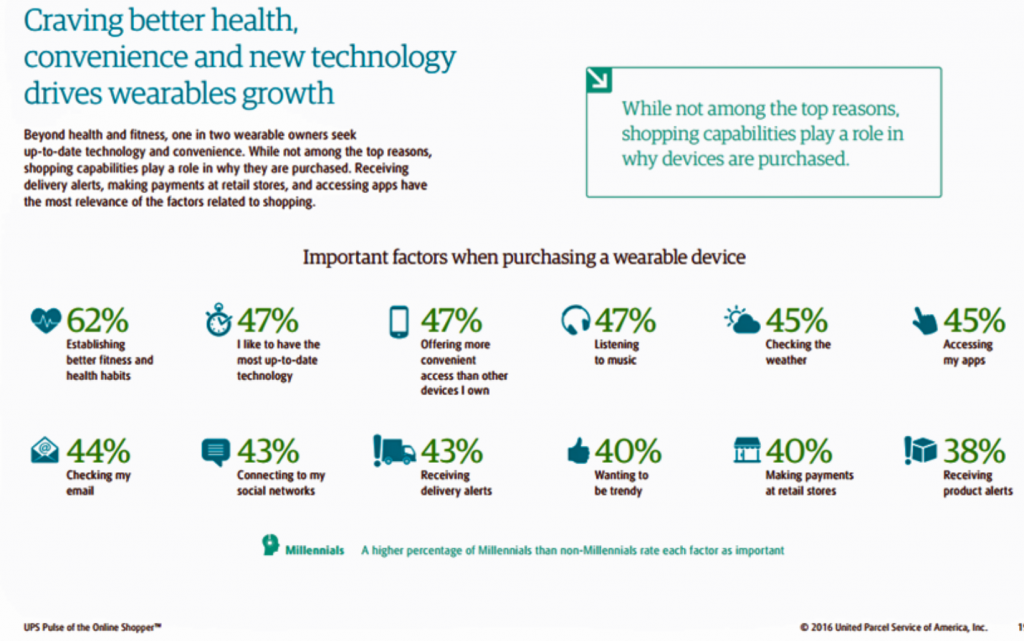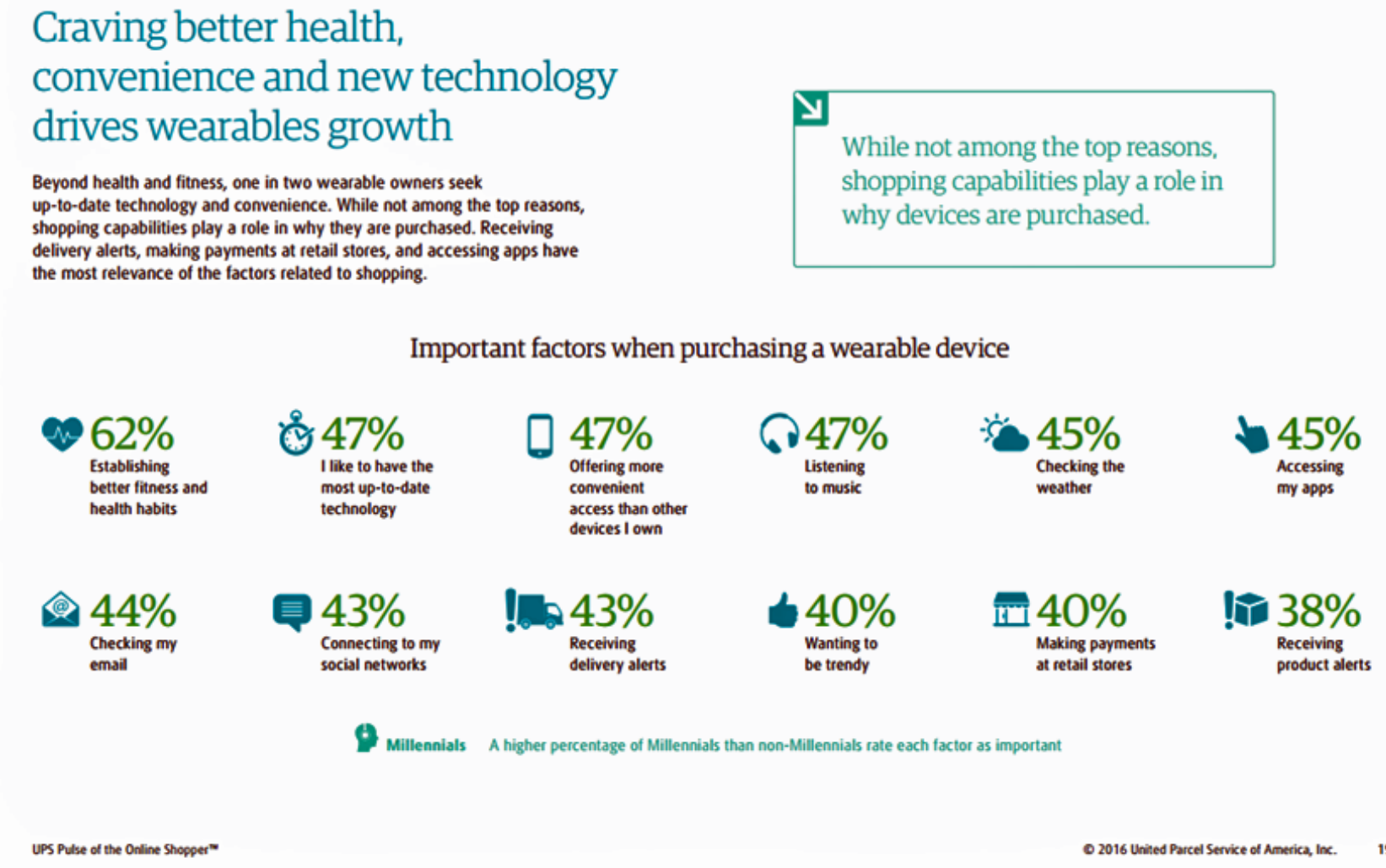 Some 18% of U.S. consumers use a wearable device, according to the 2016 UPS Pulse of the Online Shopper survey.
Some 18% of U.S. consumers use a wearable device, according to the 2016 UPS Pulse of the Online Shopper survey.
UPS researched tech-savvy shoppers with an eye to understanding where and how people buy stuff – and of course, how they ship it given the company’s core logistics business. (“Tech-savvy” in this study means consumers had purchased at least two items online in a typical 3-month period).
Overall, Millennials adopt devices and do more tech-shopping compared with other generations, but UPS notes that other groups are indeed shopping for tech and shipping it, too. Millennials are leading the way, but even older generations can “look” Millennial in their shopping behaviors.
The 2015-2016 comparison of wearable device adoption shows growth from 13% in 2015 to 18% in 2016, heavily driven by Millennials’ interest.
1 in 6 people who did not currently own a wearable device are interested in acquiring one in the next year, UPS found. Current wearable users do the following activities:
- 76% monitor fitness (with more Non-Millennials doing so at 82%, and more women than men)
- 60% use smartwatches, led by Millennials
- 38% use GPS functions
- 30% monitor “health” (as opposed to fitness), 2x the number of Millennials (39% vs. 20% Non-Millennials)
- 23% use eyewear, again double the number of Millennials (31%) vs. Non-Millennials (15%).
The only other device categories showing growth were connected TVs, increasing from 28% in 2015 to 32%, and smartphones growing from 74% of adoption in 2015 to 77% of adoption in 2016, PC purchases and tablets showed flat adoption (95% and 57%, respectively).
The most important factors consumers consider when purchasing a wearable device are led by health reasons: 62% say the goal is to establish better fitness and health habits, compared with 47% who are tech-loving (“I like to have the most up-to-date technology”) and convenience-appreciating (47% liking convenient access compared with other devices), with another 47% wanting to listen to music via the device.
UPS surveyed 5,330 consumers in January and February 2016 who had purchased at least 2 items online in a typical 3-month period.
Health Populi’s Hot Points: UPS has a vested interested in people shopping online, but they also benefit from people shopping in retail stores because they ship “everywhere.” Increasingly, the company finds that consumers want their stuff shipped “everywhere,” too — people in urban areas often find it difficult to receive their goods securely; people in rural areas can also have challenges in getting their stuff to their homes. So shoppers are asking UPS to deliver stuff to retailers’ stores, friends’ and families’ homes, a UPS location, to the workplace, or other location.
Increasingly, shopping is being done via smartphones — 25% expecting to do so more frequently going forward; and, 24% of tablet-using shoppers expect to shop more via mobile tablet as well.
The bottom-line: consumers shop and live omni-channel, multi-channel, 24×7, in “I-want-it-now” mode. (Thank Amazon Prime, in part, for priming consumers in this regard). 3 in 4 people are looking for a peer-review or recommendation. 70% of people are looking for easy access to information on a retailer’s site, including real-time inventory. And, 59% of shoppers would like product recommendations based on past browsing and buying behavior — that is, personalization.
This is the new retail, and a challenge for incumbent retailers. That’s the prime (pardon the pun) reason Walmart purchased Jet.com earlier this month, for the behemoth retailer’s ability to grow omni-channel capabilities.
Consumers’ expectation in their retail shopping lives are bleeding over into their health-lives, too. Health/care is expected everywhere, and should be as people take on more health financial responsibility….they’ll exercise more clout and vote with their out-of-pocket spending.





 Thank you, Trey Rawles of @Optum, for including me on
Thank you, Trey Rawles of @Optum, for including me on  I was invited to be a Judge for the upcoming
I was invited to be a Judge for the upcoming  For the past 15 years,
For the past 15 years,